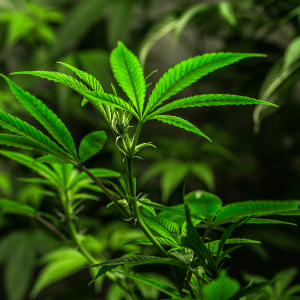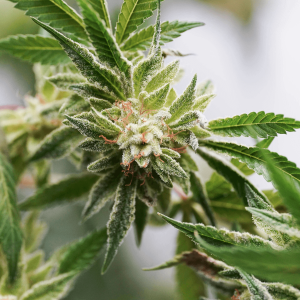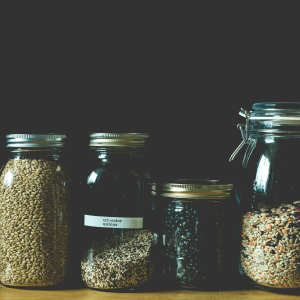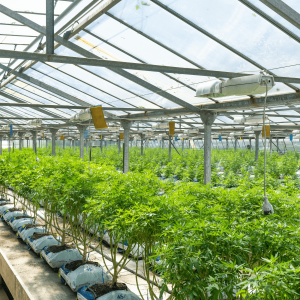Feminized seeds have revolutionized the world of cannabis cultivation, making the process far more efficient and productive.
These specially bred seeds are designed to produce only female plants, which are known for their rich cannabinoid content. This guide will break down everything you need to know about feminized cannabis seeds, from their importance in modern cannabis farming to basic storage techniques. We’ll discover why these seeds are a game-changer, explore their benefits, and offer tips to help you succeed in your growing projects.
Whether you’re a novice grower or an experienced cultivator, this comprehensive guide is the ultimate resource to help you get the most out of your cannabis plants. Let’s dive in!
History of Feminized Seeds
The history of feminized seeds began in the late 1990s when cannabis growers started exploring ways to improve yield and efficiency. Originating from experimental trials and error, these seeds aimed to simplify the cultivation process by eliminating the male cannabis plants that don’t produce the desirable buds.
Key pioneers in feminized seed technology include Dutch Passion and Green House Seeds, companies that invested heavily in research and development to perfect the breeding techniques.
Over time, the methods have evolved significantly, moving from rudimentary techniques to advanced biotechnological processes. Today, feminized cannabis seeds are more reliable, offering growers nearly 100% female cannabis plants that are rich in cannabinoids and invaluable for both medical and recreational cannabis markets.

What Are Feminized Seeds?
Feminized seeds are a type of cannabis seed that has been specifically bred to produce only female plants.
In the world of cannabis cultivation, female plants are prized because they generate the resin-rich flowers that contain cannabinoids like THC and CBD. This makes feminized seeds an essential component for growers who want to maximize both their yield and the potency of their crop.
Difference Between Regular, Feminized, and Autoflowering Seeds
Cannabis seeds come in various forms, each with its strengths and purposes. Regular cannabis seeds can produce both male and female plants, requiring growers to identify and remove the males to avoid pollination.
Feminized weed seeds eliminate this hassle by ensuring that every plant will produce buds.
On the other hand, autoflowering seeds have been bred to flower based on age rather than light cycles, making them easier to cultivate in varied lighting conditions.
How Feminized Seeds Are Made
The process of creating feminized seeds involves manipulating the cannabis plant’s reproductive mechanisms to ensure that only female cannabis seeds are produced. This typically involves stressing a female plant to produce pollen, which is then used to fertilize another female plant. The resulting seeds are feminized, producing only female plants when they grow.
Techniques Used: Colloidal Silver, Rodelization, and Gibberellic Acid
Colloidal Silver:
This technique involves spraying a female plant with a colloidal silver solution, which inhibits the plant’s natural ethylene production. This causes the female plant to develop pollen sacs and produce pollen that contains only female chromosomes.
- Pros: High success rate, widely used, produces potent feminized marijuana seeds.
- Cons: Requires regular application and can be harmful if not handled properly.
Rodelization:
This more natural method allows a female plant to go beyond its usual flowering stage, inducing a stress response that generates male flowers. The pollen from these flowers also contains female chromosomes.
- Pros: Natural and safe, requires minimal effort.
- Cons: Unreliable, may not produce sufficient pollen for large-scale operations.
Gibberellic Acid:
By applying gibberellic acid to a female plant, growers can disrupt the plant’s hormonal balance, causing it to produce pollen with female chromosomes. This technique is less common but is effective in producing feminized marijuana seeds.
- Pros: Effective and can be used on a variety of strains.
- Cons: Less predictable results, requires precise application and dosage.
Each method has its nuances, and growers may choose based on their priorities, resources, and level of expertise. Understanding these techniques provides valuable insights into the science of cannabis cultivation and helps in selecting the best method suited to one’s growing setup.
Benefits of Growing Feminized Seeds
One of the standout benefits of growing feminized cannabis seeds is their higher yield potential. Because these seeds are designed to produce only female plants, you can be confident that every plant will bear the cannabinoid-rich flowers you’re seeking. This efficiency means you’re not wasting time and resources on male plants, which don’t produce the desired buds. The result? A more substantial, more potent harvest.
Another significant advantage is the reduced risk of pollination. Male plants can pollinate females, leading to seed production instead of the resinous flowers you want. By using feminized cannabis seeds, you avoid this risk entirely, making your cultivation process smoother and more predictable.
Feminized seeds are also ideal for small-scale home growers. Limited space can make it challenging to separate male and female plants effectively, but with feminized seeds, you don’t have to worry about this issue. This convenience allows home growers to maximize their growing area and get the best possible results from their efforts.
Additionally, the uniformity and consistency of feminized plants can make it easier for beginners to manage their grow environment, leading to a more rewarding and less stressful experience.
Potential Drawbacks
While feminized cannabis seeds offer numerous advantages, there are also some potential drawbacks to consider. One of the primary concerns is the cost comparison with regular seeds. Feminized seeds can be more expensive due to the intensive breeding processes involved. This might make them less appealing for growers on a tight budget. However, the higher initial investment can often be recouped through the increased yield and quality of the end product.
Another issue is the potential for hermaphroditism. Although feminized marijuana seeds are bred to produce only female plants, stress factors such as environmental stressors or improper growing conditions can sometimes cause a plant to become hermaphroditic, meaning it develops both male and female flowers. This can be problematic as it can lead to pollination and reduced bud quality.
Lastly, feminized seeds are generally not suitable for breeding purposes. Because they’re designed to eliminate male chromosomes, they don’t offer the genetic diversity needed for creating new strains. For those interested in experimenting with breeding, regular seeds might be a better choice.

How to Choose Feminized Seeds
When it comes to choosing feminized seeds, several key factors can help guide your decision-making process.
First and foremost, consider the strain you want to grow. Different strains have unique characteristics, including flavour profiles, growth habits, and cannabinoid content, so pick one that aligns with your personal preferences and cultivation goals.
Another important consideration is your climate. Some strains are more suited to warmer, sunnier climates, while others thrive in cooler, more temperate regions.
Lastly, think about your grow space. If you’re working with limited space, opt for strains known for being compact and manageable. On the other hand, if space isn’t an issue, you have the flexibility to choose more expansive strains.
Some highly recommended seed banks and breeders known to produce the best feminized seeds include ILGM, SeedSupreme, and Dutch Passion. Customer reviews and ratings can also offer valuable insights, helping you make an informed choice by highlighting the experiences of other growers with similar setups and goals.
Popular Feminized Strains
Choosing the right feminized strain can be crucial to a successful grow. Here are some top picks to consider:
Top Strains for Beginners
- Blue Dream: Known for its resilience and ease of growth, Blue Dream is a favorite among novice growers.
- Green Crack: Green Crack strain offers a quick flowering time and is quite forgiving, making it perfect for beginners.
- Northern Lights: With its hardy nature and resistance to common pests and diseases, Northern Lights is another excellent choice.
Strains with the Highest Yield
- Big Bud: As the name suggests, Big Bud is renowned for its massive flower production.
- Amnesia Haze: This strain not only delivers a high yield but also boasts a strong, euphoric effect.
- Critical Kush: Offering a robust harvest and potent buds, Critical Kush is ideal for those looking to maximize their output.
Strains with Unique Flavors and Effects
- Tangie: With its delightful citrus flavor and uplifting effects, Tangie is a treat for the senses.
- Purple Haze: Purple Haze is celebrated for its vibrant color and the unique combination of its sweet, earthy flavor with a creative, energetic high.
- Girl Scout Cookies: Known for its rich flavor palette including notes of mint, chocolate, and skunk, Girl Scout Cookies provides a balanced, euphoric high.
Growing Feminized Seeds: Basics
Getting started with feminized cannabis seeds can be a rewarding if you know the basics. Here, we’ll cover some essential steps to help you set up your grow space, decide between soil and hydroponic systems, and understand light requirements.
Setting Up Your Grow Space
First things first, you’ll need a dedicated grow space. This could be a spare room, a closet, or even a grow tent. Make sure the area is well-ventilated and secure, as maintaining the right temperature and humidity levels is crucial.
Organize your tools and materials so that everything is within reach, making the day-to-day tasks simpler. You’ll need pots, soil or a hydroponic system, lights, and a method for supporting the plants as they grow. Depending on your setup, you may also need fans and possibly a carbon filter to control odors.
Soil vs. Hydroponic Systems
Deciding between soil and hydroponics can feel a bit overwhelming, but it boils down to your personal preferences and experience level. Growing in soil is often more forgiving and can produce rich, flavorful buds. It’s as simple as filling pots with quality soil, planting your seeds, and ensuring they’re well-watered and fed with the right nutrients.
Hydroponic systems, on the other hand, can provide faster growth rates and potentially higher yields. They require a bit more technical know-how, involving growing plants in a nutrient-rich water solution instead of soil. While this method can be highly efficient, it leaves less room for error, as the plants can quickly suffer from nutrient imbalances.
Light Requirements and Best Practices
Light is one of the most important factors when growing feminized seeds. Cannabis plants typically need 18-24 hours of light per day during the vegetative stage and about 12 hours per day during the flowering stage. LED lights are popular among growers for their energy efficiency and full-spectrum light, though some still prefer the classic HPS and MH lights for their intensity.
Position your lights so they’re close enough to provide sufficient light but not so close that they cause heat stress. A general rule is to keep LED lights about 12-18 inches away from the plants. Invest in a timer to maintain a consistent light schedule and consider using reflective materials on the walls of your grow space to maximize light efficiency. Remember, the right lighting setup and schedule can make a world of difference in the quality and quantity of your harvest.
Germination Process
Germinating feminized marijuana seeds is a straightforward process that sets the foundation for a successful grow.
Start by placing your seeds between moist paper towels, ensuring they remain damp but not soaked. Store them in a warm, dark place for about 24-72 hours. Keep an eye on the seeds and when they crack open to reveal tiny white roots, they’re ready to be planted.
Carefully transfer these seedlings to your growth medium, whether it be soil or a hydroponic system, ensuring the root is pointing downward. A common mistake to avoid is overwatering which can suffocate the seedlings. Additionally, placing seeds too deep can hinder their growth.
Healthy seedlings are vibrant green and exhibit steady growth; if they appear yellow or stunted, assess their light and nutrient conditions promptly.
Vegetative Stage
During the vegetative stage, it’s all about giving your plants the ideal conditions to grow strong and healthy. This stage typically lasts between 3-16 weeks, depending on the strain and your grow goals.
Aim for a warm environment between 70-85°F with humidity levels around 40-70%. This is when your plants will be soaking up nutrients, so a balanced veg nutrient mix high in nitrogen is essential. Keep an eye on the pH levels, aiming for a range of 6.0-7.0 for soil and 5.5-6.5 for hydroponics.
Pruning and training techniques like topping, FIMing, and LST (low-stress training) can encourage bushier growth and better light distribution. This ensures your canopy is even and maximizes the potential yield. Remember, giving your plants TLC during this stage sets the foundation for a bountiful harvest.
Flowering Stage
Recognizing the start of the flowering stage is an exciting milestone in your growing journey. Typically, you’ll notice your plants starting to develop tiny white hairs (pistils) at the nodes where the branches meet the main stem. This is a sign that it’s time to adjust your light cycle to 12 hours of light and 12 hours of darkness, mimicking the natural progression of the seasons.
Nutrient-wise, switch to a bloom formula higher in phosphorus and potassium to support bud development. Keep a close eye on your plants during this stage for any signs of pests or diseases, as they can quickly affect your yield.
Regularly inspect the leaves and buds for any unusual spots, webs, or mold, and take action immediately if you spot anything amiss. This attentive care will help ensure a healthy and bountiful harvest.
Harvesting Feminized Plants
Knowing when to harvest your feminized plants is crucial for getting the best potency and flavor. Look for signs such as the pistils turning from white to a reddish-brown color and trichomes changing from clear to a milky or amber hue. Upon spotting these indicators, use a clean, sharp pair of scissors or pruning shears to cut the plants at the base. Immediately after cutting, hang the branches upside down in a dark, well-ventilated room to dry, maintaining a temperature of around 60-70°F and humidity levels between 45-55%.
Once the buds feel dry to the touch but still have some moisture inside, it’s time to move on to the curing process. Place the dried buds in airtight glass jars, opening them daily for the first week to release moisture. This curing period can last from a few weeks to a couple of months but significantly enhances the potency and flavor of your cannabis.

Common Problems and Solutions
Even with the best care, your cannabis plants might run into some common problems. Identifying and treating pest infestations early is crucial; keep an eye out for signs like chewed leaves or tiny black dots. Utilize organic insecticides or beneficial insects like ladybugs to keep pests under control.
Nutrient deficiencies can show up as yellowing leaves or slow growth; a balanced nutrient mix and regular pH checks can usually sort this out.
Lastly, environmental stress issues such as extreme temperatures or humidity fluctuations can be mitigated by monitoring your grow space closely and using fans, humidifiers, or dehumidifiers as needed.
Keeping a close eye on your plants and addressing issues promptly will ensure a healthy, successful grow.
Storing Feminized Seeds
Properly storing your feminized cannabis seeds ensures they remain viable for future grows. Here are some best practices for long-term storage:
- Keep seeds in a cool, dark place to prevent premature germination.
- Store seeds in airtight containers to protect them from moisture and pests.
- Label your containers with the seed strain and date of storage for easy identification.
- Consider using silica gel packs to control humidity within the storage container.
- Refrigerate seeds for best results, maintaining a consistent temperature of around 40°F.
Avoiding common storage mistakes is crucial to maintaining seed viability:
- Do not expose seeds to direct sunlight or fluctuating temperatures.
- Avoid opening the storage container frequently, as this can introduce moisture.
- Never store seeds in a humid environment, which could lead to mold growth.
Seed viability tends to decrease over time. While feminized seeds can remain viable for several years if stored correctly, their germination rates may drop after the first couple of years. Regularly check your seed stock and plan your grows accordingly to maximize successful germination.

Tips from Experienced Growers
Growing cannabis can be both an art and a science, and seasoned growers have picked up plenty of wisdom along the way. To help you along your journey, here are some pearls of advice from the experts.
First and foremost, avoid the rookie mistake of over-caring for your plants. While it’s tempting to hover and constantly tweak conditions, cannabis plants thrive when they’re given some space to grow. For best results, stick to a consistent watering schedule and avoid over-fertilizing, which can lead to nutrient burn. In addition, invest in a high-quality pH meter to keep your growing medium within the optimal range—this alone can prevent a host of issues.
Advanced cultivators emphasize the importance of proper training techniques, such as SCROG (Screen of Green) and super cropping, to maximize yields and improve light distribution. These methods might seem complex, but with a bit of practice, they can significantly enhance your harvest.
Furthermore, seasoned growers often recommend monitoring environmental conditions closely, using tools like hygrometers and oscillating fans to maintain ideal temperature and humidity levels.
By combining these advanced techniques with basic foundational practices, even novice growers can set themselves up for a rewarding and abundant crop.
Conclusion
Feminized seeds offer a straightforward and rewarding path for cannabis cultivation, ensuring every plant yields buds without the guesswork of identifying and removing male plants. This not only maximizes your efficiency and space but also contributes significantly to a more bountiful harvest.
Embracing this method invites both novice and seasoned growers to experiment and hone their techniques, leading to continuous learning and improvement.
Don’t hesitate to tap into resources like grower forums, books, and online guides to enhance your knowledge. Joining a community of fellow cultivators can provide invaluable support, advice, and camaraderie as you set off on or advance in your growing journey.

Frequently Asked Questions
1. Is it worth buying feminized seeds?
It is absolutely worth it to buy feminized cannabis seeds. Buying feminized seeds can be a game-changer for many growers. Since feminized seeds are bred to produce only female plants, you will only get the bud-producing plants, eliminating the time and effort needed to identify and remove males. This efficiency translates to more space for productive plants and a higher overall yield, making the extra cost worth it for many cultivators.
2. What is a feminized seed?
A feminized seed is a cannabis seed genetically engineered to produce only female plants. Through a special breeding process, feminized cannabis seeds eliminate the possibility of male plants, ensuring that every plant in your garden will produce the desired buds. This makes growing more predictable and straightforward, especially for beginners who may find identifying a male plant more challenging.
3. What’s better: Autoflower or feminized seeds?
Choosing between autoflower and feminized seeds depends on your specific growing needs and experience level. Autoflower cannabis seeds are known for their quick growth cycle and ability to flower regardless of light schedule, making them ideal for short growing seasons or for those who want multiple harvests in a year. Feminized cannabis seeds, on the other hand, tend to produce larger yields and higher potency but require more attention to light cycles. For novice growers or those with limited time, autoflowers might be easier, while more experienced growers might prefer feminized cannabis seeds for their bigger rewards.
4. Why are regular seeds better than feminized?
Regular seeds produce both male and female plants, which can be beneficial for breeders looking to create new strains or for those who want to collect pollen for future breeding projects. While they require more effort in sexing and the removal of male plants, regular seeds are often considered to have more genetic stability. This can result in stronger, more resilient plants. Thus, experienced growers who enjoy the full growing process and want the option to breed might prefer regular over feminized seeds despite the extra steps involved.

 Rewards
Rewards




